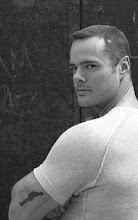DO THEM.
...oh, right, to clarify: compound exercises are resistance exercises that target more than one body part, recruiting multiple joints and muscle groups to perform. On the other end of the strength training continuum, we have isolation exercises, that only work one muscle across a single joint. This is not to say that isolation exercises are bad - if fact, they are great for the putting the final touches of tone and definition on your arms, glutes, calfs, etc...but they are not as an efficient use of your body, your time or your hormonal resources as compounds exercises.
Functionally speaking, our muscles do not work on a daily basis in isolation, so why would we train them in isolation? Imagine trying to climb your building's front stoop with an arm-load of groceries while fiddling in your pocket for your keys...exactly. Furthermore, compound exercises not only use our bodies more efficiently, but they also use our time more wisely - why train one body part when you can train several in the same amount of time?!
While these may seem like obvious and logical reasons to train in a multi-motion pattern, there are some reasons that are less apparent. When you train multiple muscle groups at the same time, it elicits a dramatic increase in the levels of positive growth hormones, including testosterone, insulin-like growth factor 1 and growth hormone.
Sure, compound exercises are difficult to perform and require more focus and dedication, but what are you...lazy? I thought not. The rewards for stepping beyond the stationary, isolation machines are tremendously worthwhile. Not only do compound exercises burn 2-3 times more calories, but they work through carbohydrate stores much more quickly, thereby releasing fat as an energy source! You also can lift heavier weights because you are calling upon more muscles to activate - your weight stack will look all that more impressive and you might leave the gym with more than just a better body...
Examples of compound exercises:
- squat, standing up into a bicep curl, leading into an overhead shoulder press
- squat, with a back row
- lunge (static, front or reverse), a lateral shoulder raise
- lunge (static, front or reverse), on a cable machine, with a chest press or chest fly

No comments:
Post a Comment